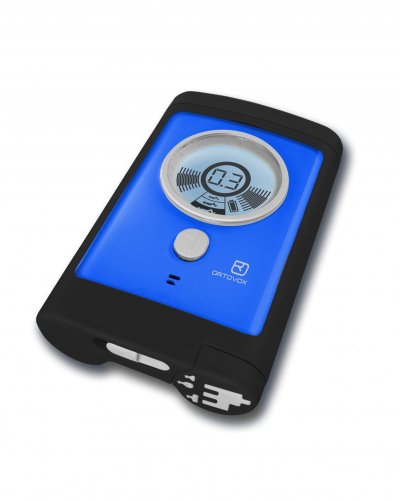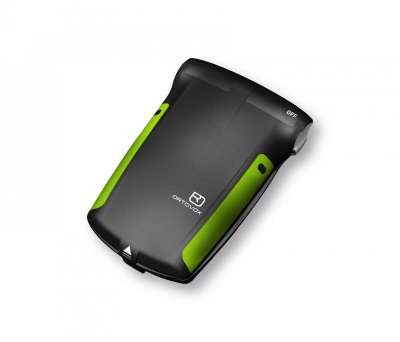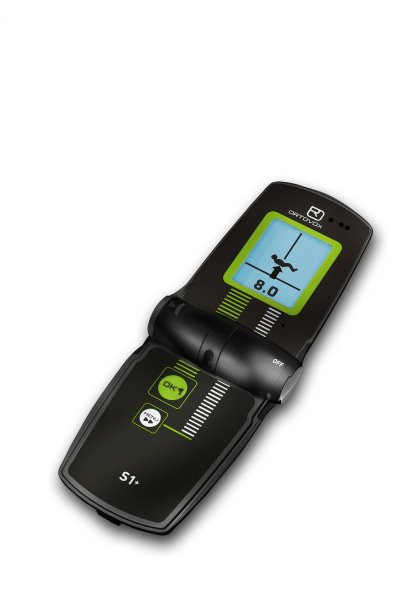Over the last ten years I’ve had the opportunity to thoroughly test many of the most popular avalanche safety products on the market while teaching close to a dozen avalanche courses each winter. I was already a huge fan of Ortovox products before I was invited to join their Athlete Team and have been sharing my love of the brand personally with my students for two winters now. In part 1 of my avalanche gear series I’ll explain what makes Ortovox beacons different and try to help you decide which avalanche transceiver* (beacon) best suits your end goal!

Part 1: Avalanche Transceivers (Beacons)
Part 4: Avalanche Airbags (coming soon)
*Note to the reader, the words “transceiver” and “beacon” will be considered synonyms.
Part 1: Transceivers
If you have ever taken an avalanche course and asked the instructor “What’s the best beacon?” you will probably get the same non-endorsing answer, “The one you practice the most with”.
While there is some good-natured truth to that boxed statement let’s get real. There are some specific features and design choices someone shopping for an avalanche beacon should consider. In no particular order;
- Is the beacon intuitive (especially under stress)?
- Can the beacon handle multiple burial situations?
- Does the beacon have a “flagging” function?
- How “search-able” am I? <- We will get into that in more detail
Ortovox has three models of transceivers which completely cover the range of user groups who are looking for a beacon. Before we get into what makes each model different let’s look at the single most important feature that sets Ortovox beacons apart from all others out there!
SMART-ANTENNA-TECHNOLOGY™
What does that mean? Well all Ortovox beacons (and any decent modern beacon these days) uses triple antenna’s while searching. We know that triple antenna’s are faster and more accurate at locating a buried partner than extinct single antenna beacons and outgoing dual antenna beacons, especially during the final moments of a fine search (getting you closer to the victim before you start probing). I would strongly encourage, regardless of brand, you only shop triple-antenna beacons at this point.
So when a triple antenna beacon is in search mode it uses two antenna’s during the signal search phase and turns on the third vertical antenna when you get close to the victim to aid in pinpointing there location and reduce probing time.
Ortovox takes this technology one step further though to make it easier to be found! Simply put, when searching with a triple antenna beacon any beacon will use all three of its antenna’s. When transmitting however it can only use one. All other beacons on the market will only transmit on the biggest antenna regardless off orientation. Before we move on with how Ortovox has innovated a great feature here let’s make sure we understand what a “flux line” is.
A flux line is the pattern of the radio signal a transmitting beacon sends out. A searching beacon must get within this “flux line” area to start picking up the buried persons beacon.

In the above image you can see both an example of how these flux lines radiate out from the buried beacon, and at the top right an internal look at a triple antenna beacon. Take note of the three antenna’s, X, Y, and Z. So any other beacon on the market will only transmit on the X antenna. If the beacon is buried “flat” the flux lines will spread out far making it easier for a searching beacon to locate from distance. This is referred to as “strong coupling”.
If the victim gets buried with their beacon held in a vertical orientation, the flux lines radiate out more “vertically”, which is less than ideal for being found quickly. This is referred to as “weak coupling” between the searching beacon and the transmitting beacon. Essentially you are “less visible” and searchers must get closer to you before they can pick up a signal. Unless you have an Ortovox beacon.
With the previous information understood we can start to see what Ortovox does here. They have built in software and an internal gyroscope so that the transmitting beacon can analyze its orientation and select which ever of the three antennas will provide the best “coupling” with a searching beacon. While antenna X might send a farther signal than antenna Z that doesn’t help you much if the beacon is orientated vertically, essentially sending the signals straight up and down from the victim, instead of horizontally across the debris field. Because of “Smart-Antenna” technology you are essentially “more visible” regardless of what orientation you are buried in!
While that is one of my favorite features that sets Ortovox apart in the market let’s look at some of the other features you should consider when beacon shopping.
Auto-Revert
Or as Ortovox calls it “automatic switch-over”. What is that? Well if you are searching a debris field for a victim and your beacon is in search mode it is not transmitting a signal. If a secondary avalanche hits you it is crucial that your beacon go back into transmit mode so you can be located. Different brands have different strategies for getting a beacon to go back into transmit without user input. Some require specific boot-up steps every time you turn them on, others are based on long times in search modes or lack of motion (5 to 8 minutes in some cases). Every Ortovox beacon has an internal motion sensor and if the software does not sense significant movement within two minutes the beacon will automatically return to transmit mode. I greatly prefer this to other brands that take 5+ minutes to switch to transmit! If I’m not moving (i.e. buried in debris) I would much prefer my beacon to start transmitting again sooner rather than later!
Recco
Becoming more common across the industry Ortovox has placed a Recco reflector in every one of their models. This can speed up recovery in places with professional rescue teams (700+ ski areas around the world) and act as a back-up if your beacon is damaged or you forgot to put new batteries in (which should never happen with a proper Trailhead Function Check!).
Now that we’ve covered all the similarities of Ortovox beacons let’s look at the three individual models and decide which one is right for you!
Zoom+ Transceiver (Beacon)

Simple, effective, intuitive, compact. The Zoom+ fits great in my zippered ski pants pocket where I choose to carry it. Its straight forward design is a boon for both stressful situations and less-experienced back-country travelers. The advanced features mentioned above make this a great choice at the price point when compared to other beacons on the market. Highly recommended for those who spend limited time in avalanche terrain or stick to lower danger days (great for ice climbers, high-altitude mountaineers, etc). MRSP $289 This model also comes in a set with a great shovel and probe here!
Ortovox 3+ Avalanche Transceiver

- Ortovox 3+ Transceiver (Beacon)
With better visuals to aid during pinpointing and the ability to “flag” victims that you have a confirmed probe strike on this model should be attractive to the largest group of back-country travelers. Back-country skiers, riders, search & rescue members, and snow-mobilers would find this a solid choice in the category and this has been our rental transceiver of choice for the past two winters!
Ortovox S1+ Transceiver

The top-of-the-line model in the Ortovox lineup the S1+ impresses. With a unique “flip phone” design the S1+ automatically goes in to search mode when you “flip open” the device.

Beyond that the most significant difference is the S1+ has one of the fastest, if not the fastest, processors on the market which allows it to display a digital visual “overview” of the scene which can greatly help you triage multiple burial scenarios. With a search strip width of 50 meters (10 more than the other two models and most other beacons out there) you can cover more ground and find poor coupled signals faster. Intuitive flagging functions help recover more people faster (when you have enough people to dig). Customization to suit your preferences and level of training are built in along with a digital inclinometer to help with terrain assessment/choice. This should be the choice of professional mountain guides, trip leaders, and those who simply want the best possible beacon on the market. MRSP $490
Summary
I hope you’ve found this post educational. At the end of the day there are a ton of great beacons on the market these days from quite a few different companies. I obviously love the Ortovox line and I think when you objectively compare features and get some hands-on time with any of the three models you’ll feel the same way. I’ll end with that most often cliche statement, that the best beacon really is the one you practice with the most! To that end consider upgrading your rescue skills with the all new 8 hour AIARE Avalanche Rescue Course! This is a fantastic addition in the field of avalanche education and something you should consider if you’ll be spending time in avalanche terrain in the future!
Part 1: Avalanche Transceivers (Beacons)
Part 4: Avalanche Airbags (coming soon)
See you in the mountains,
Northeast Alpine Start

Affiliate links above support the content created here at no cost to you. Author is an Ortovox Team Athlete so any product mentioned was received at no cost.

[…] Part 1: Avalanche Transceivers (Beacons) […]
LikeLike
[…] Part 1: Avalanche Transceivers (Beacons) […]
LikeLike
You talk about functionality of transceivers. But, the most important aspect of the transceiver is how quickly victim(s) can be found, of course the shortest time is the best one to carry. Unfortunately, there are no comparisons of these tests. The manufactures describe mainly spec of their transceivers, such as the range. I would like to see a standard testing of transceivers, i.e, hide and seek in the snow field by several testers, and record the time that each took to find a hidden transceiver. I did this test with two different transceiver with an avalanche safety instructor. We gathered a consistant data by repeating the tests. We found one transceiver took nearly 10 minutes to locate the hidden transceiver. The other transceiver took only one minute. I would like to see test conducted by an independent group for many different transceivers.
LikeLike
Thank you for your comment Yuki. I imagine this would be a tough test to conduct fairly as I have seen experienced professionals use single antenna analog beacons faster than the latest digital models because they had so much practice with that model. The skill of the practitioner is most likely the determining factor between a one-minute probe strike and a ten-minute probe strike, especially if the models are both 3 antennae models. It goes back to an age-old saying in avalanche education…. “The best beacon in the world is the one you practice with the most”.
LikeLike
Appreciate the write up! Just took your advice and upgraded to the Ortovox Zoom.
LikeLike
[…] slaying back-country pow or climbing alpine gullies. I can help you pick out the right model with this post from last year. If you don’t own a beacon you might also be looking for a good shovel and […]
LikeLike
[…] into a lot of detail on what makes Ortovox beacons so awesome (and what to look for in general) in this post from last year, so check that out if you want to learn more about the technology involved. […]
LikeLike